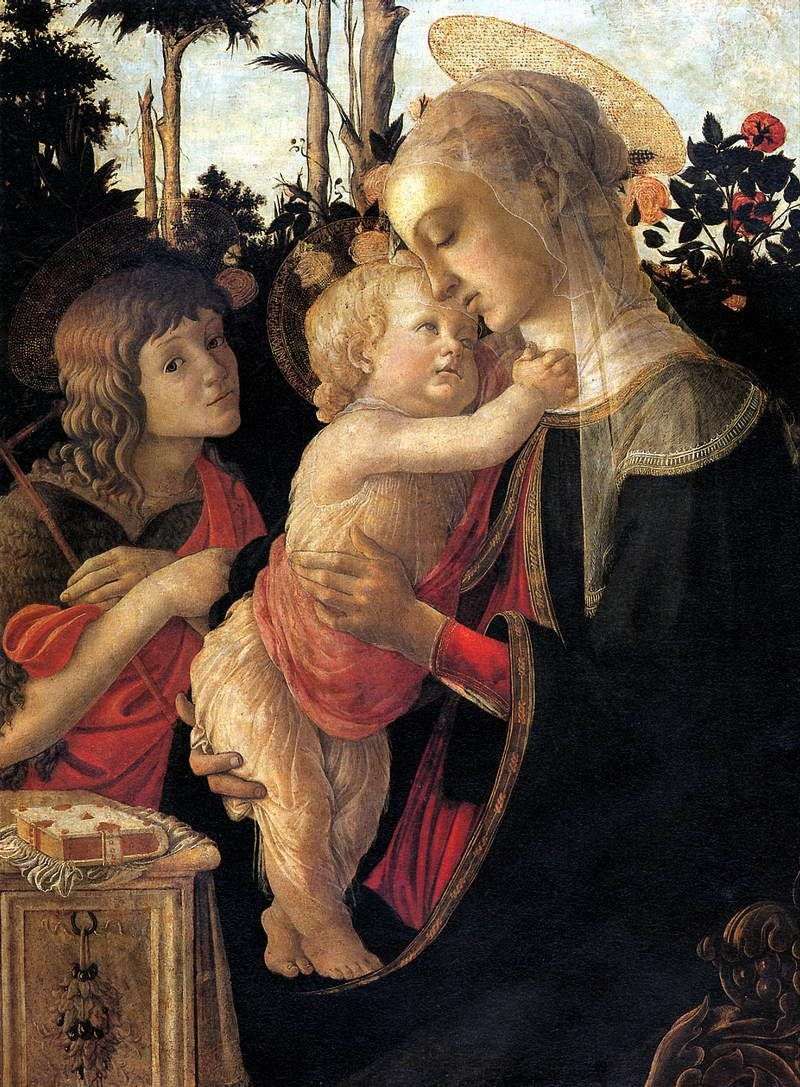
The name of Botticelli usually evokes in memory the image of the Madonna. The future artist lived and was brought up in a patriarchal, deeply religious family, which left an imprint on his entire subsequent life. “The Madonna with the Child and John the Baptist” from the collection of the Louvre refers to the flowering of his work, the time when he worked at the court of the powerful Medici family.
The painting was painted between the 70th and 85th years of the 15th century. In this work, everything radiates enlightened gentleness, generated by the harmony of feeling and drawing. The artist managed to achieve an impression of the highest beauty through a single line, in a soft take-off with a wave embracing Madonna, the figure of the Infant and John the Baptist. Inside this circuit, lines of a smaller scale play, as it were, in the draperies of clothes, in the quiet melody of the hands, in the rims of the transparent veil.
I wonder how Botticelli treats the hands of his characters. In the fingers continues the same play of lines, flexibility and grace as in the whole body, devoid of a major pose, readiness for action and delicate soft, minor contours outlined with gentle gentleness. Disregard for the laws of perspective leads to the fact that the background of the landscape is not connected with figures of the foreground and exists as if separately, as a decoration. All three figures are filled with tenderness and a soft golden glow, especially the Baby and Madonna’s face on the dark background of her cloak and landscape.
The brightest red details in the robes of the Madonna, the Child and John are rhythmically coordinated with each other and with the movement of their hands and complement the full lyricism of the color scheme of the picture. In the images of the later Madonna, created under the influence of Savonarola’s ascetic sermons, the sad and disappointed artist departs from the desire to find the embodiment of eternal beauty.
The face of Madonna in his paintings becomes bloodless and pale, eyes – full of tears. These faces can still be compared with the medieval images of the Mother of God, but in them there is no solemn grandeur of the Queen of Heaven. Rather, they are women of modern times, who have known and experienced many things. “The Madonna and the Child and John the Baptist” entered the Louvre in 1824. Presumably it was bought in Tuscany by Louvre’s director Baron Vivan-Denon.
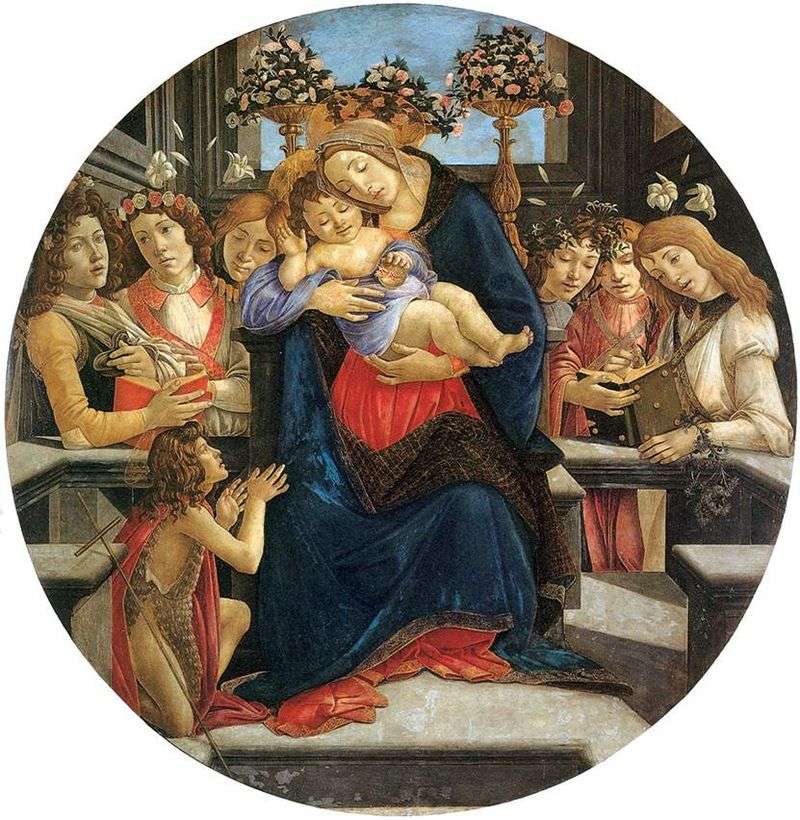 Madonna with Child, Angels and Saint John the Baptist by Sandro Botticelli
Madonna with Child, Angels and Saint John the Baptist by Sandro Botticelli Madonna Bardie by Sandro Botticelli
Madonna Bardie by Sandro Botticelli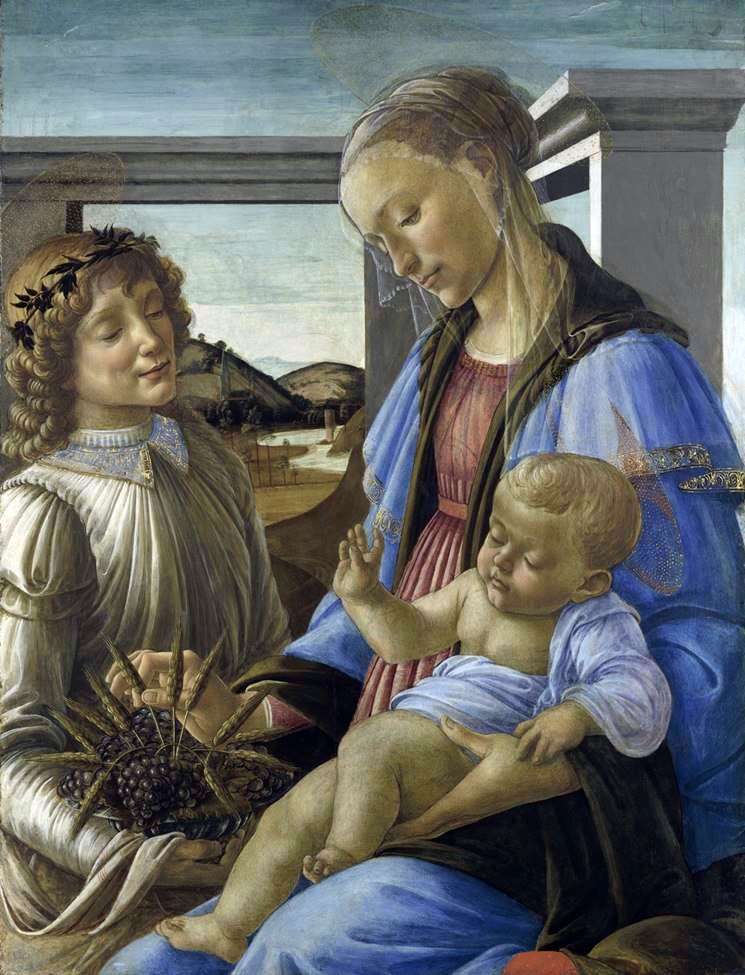 Madonna with Child and Angel (Madonna of the Eucharist) by Sandro Botticelli
Madonna with Child and Angel (Madonna of the Eucharist) by Sandro Botticelli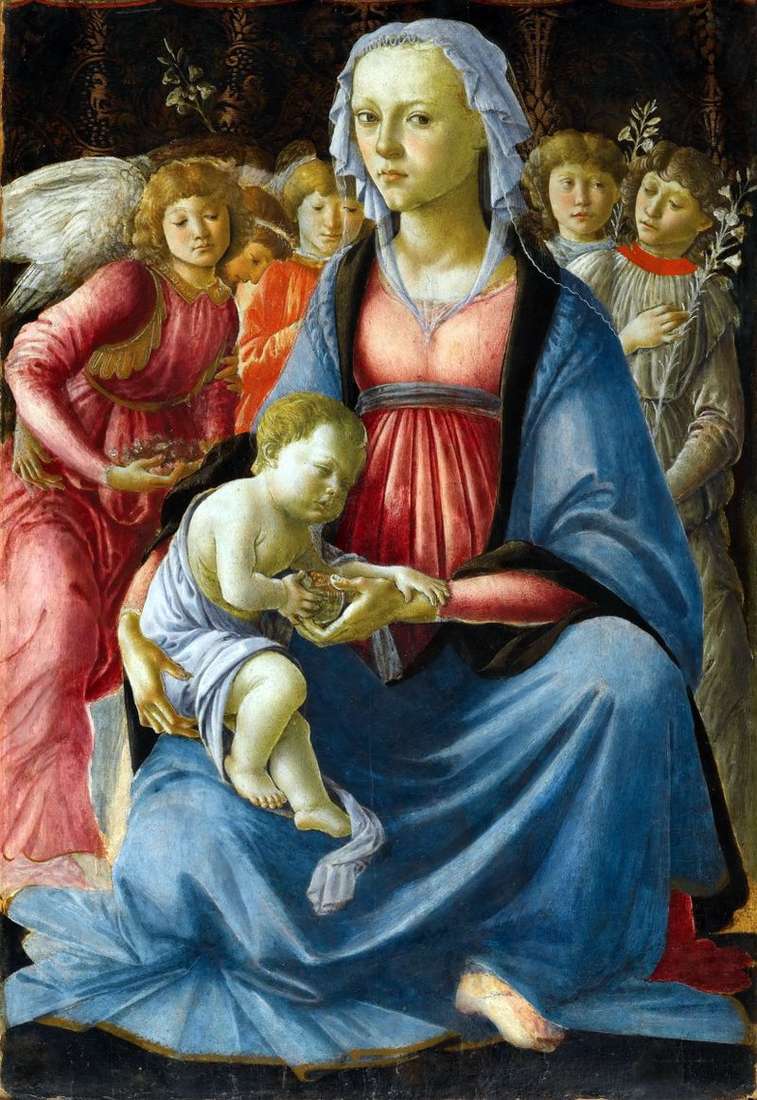 Madonna with the Child and the Five Angels by Sandro Botticelli
Madonna with the Child and the Five Angels by Sandro Botticelli Madonna with the Child and John the Baptist by Vittorio Carpaccio
Madonna with the Child and John the Baptist by Vittorio Carpaccio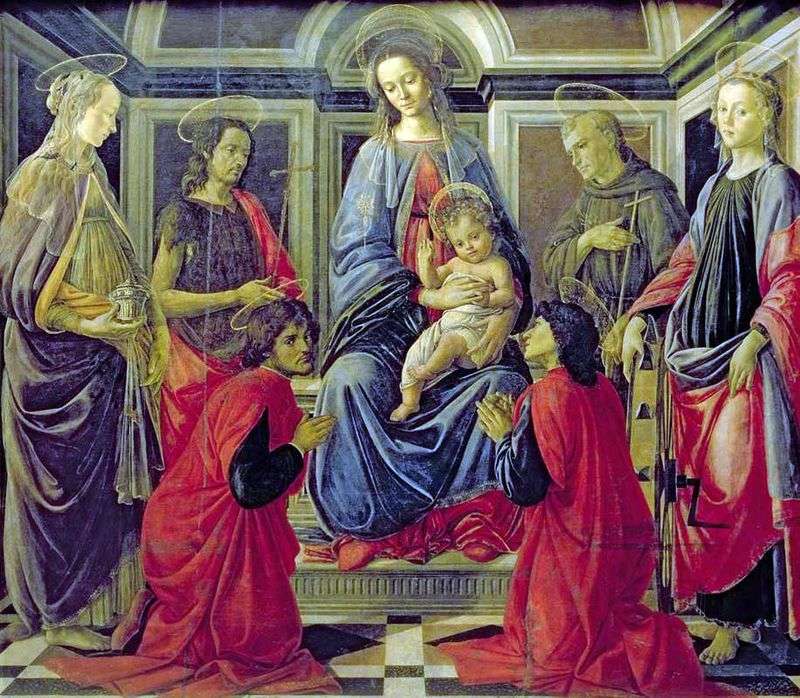 Madonna with the Child and Saints Mary Magdalene, John the Baptist, Kozma, Damian, Francis of Assisi and Catherine of Alexandria by Sandro Botticelli
Madonna with the Child and Saints Mary Magdalene, John the Baptist, Kozma, Damian, Francis of Assisi and Catherine of Alexandria by Sandro Botticelli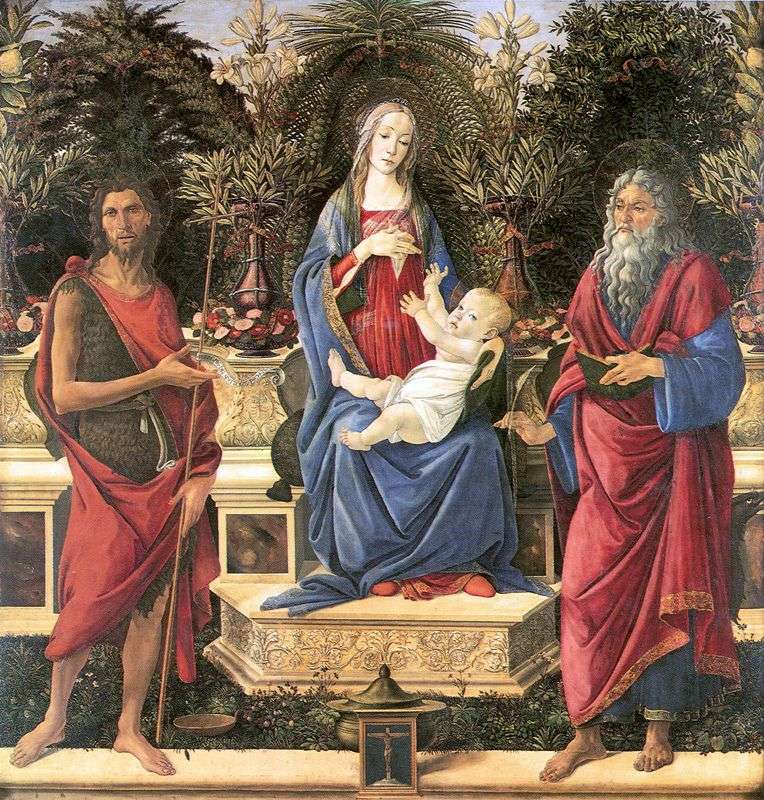 Altar of Bardi by Sandro Botticelli
Altar of Bardi by Sandro Botticelli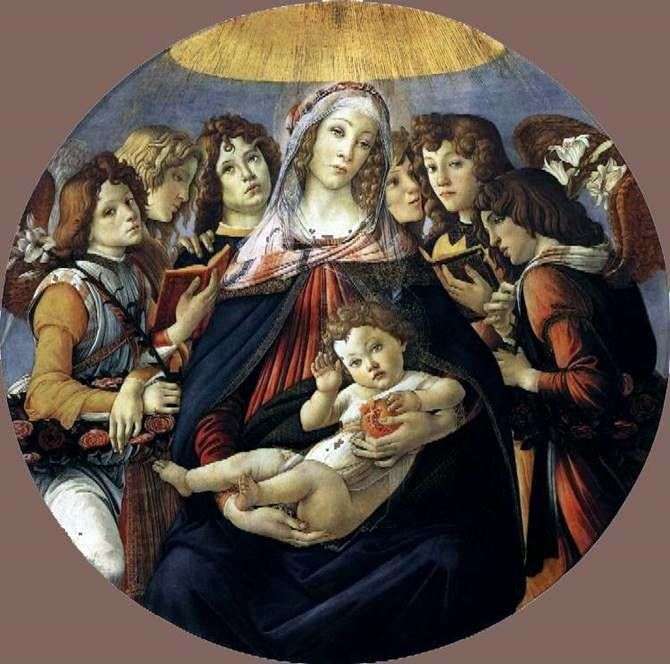 Madonna with a grenade by Sandro Botticelli
Madonna with a grenade by Sandro Botticelli